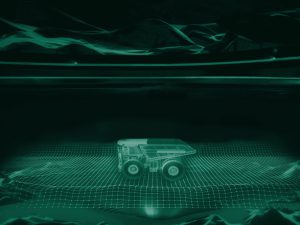Add to Wishlist
Advanced Analytics in Mining Engineering

1
1- Advanced Analytics and Exploration
- Introduction to Exploration
- Geological Features and Genetic Models of Mineral Deposits
- Minerals Prospecting and Exploration
- Geophysics Prospecting
- Geochemical Prospecting
- Conclusion
2
2- Advanced Analytics and Deposit Assessment
- Introduction to Deposit Assessment
- Geological Data Collection
- Geologic Interpretation, Modelling, and Representation
- Sample Preparation and Assaying
- Ore-Body Sampling and Metallurgical Testing
- Mineral Resource Estimation
- Valuation of Mineral Properties
- Mineral Property Feasibility Studies
- Cost Estimating for Underground Mines
- Cost Estimating for Surface Mines
- Conclusion
3
3- Advanced Analytics and Mine Management
- Introduction to Mine Management
- Mine Economics, Management, and Law
- Economic Principles for Decision Making
- Management, Employee Relations, and Training
- A Global Perspective on Mining Legislation
- Conclusion
4
4- Advanced Analytics and Mining Method Selection
- Introduction to Mining Method Selection
- Evaluation of Mining Methods and Systems
- Mining Methods Classification System Advanced Analytics in Mining Engineering Dr. Ali Soofastaei
- Selection Process for Hard-Rock Mining
- Selection Process for Underground Soft-Rock Mining
- Comparison of Underground Mining Methods
- Comparison of Surface Mining Methods
- Conclusion
5
5- Advanced Analytics and Rock Breaking
- Introduction to Rock Breaking
- Mechanical Rock Breaking
- Blast hole Drilling
- Explosives and Blasting
- Conclusion
6
6- Advanced Analytics and Ground Mechanics
- Introduction to Ground Mechanics
- Soil Mechanics
- Slope Stability
- Rock Mechanics
- Geotechnical Instrumentation
- Hard-Rock Ground Control
- Soft-Rock Ground Control
- Mine Subsidence
- Tailings Impoundments and Dams
- Waste Piles and Dumps
- Conclusion
7
7- Advanced Analytics and Infrastructure and Services
- Introduction to Infrastructure and Services
- Electric Power Distribution and Utilization
- Compressed Air
- Mine Communications, Monitoring, and Control
- Mine Surveying
- Dewatering Surface Operations
- Dewatering Underground Operations
- Physical Asset Management
- Mine Infrastructure Maintenance
- Conclusion
8
8- Advanced Analytics and Surface Extraction
- Introduction to Surface Mining
- Open-Pit Planning and Design
- Mechanical Extraction, Loading, and Hauling
- Selection and Sizing of Excavating, Loading, and Hauling Equipment
- In-Pit Crushing
- Design, Construction, and Maintenance of Haul Roads
- Strip Mining
- Highwall Mining
- Conclusion
9
9- Advanced Analytics and Underground Development and Extraction
- Introduction to Underground Mining
- Hard-Rock Equipment Selection and Sizing
- Soft-Rock Equipment Selection and Sizing
- Underground Horizontal and Inclined Development Methods
- Construction of Underground Openings and Related Infrastructure
- Underground Ore Movement
- Conclusion
10
10- Advanced Analytics and Mineral Processing
- Introduction to Mineral Processing
- Crushing, Milling, and Grinding
- Classification by Screens and Cyclones
- Gravity Concentration and Medium Heavy Separation
- Froth Flotation
- Magnetic and Electrostatic Separation
- Dewatering
- Conclusion
11
11- Advanced Analytics and Material Transportation
- Introduction to Material Transportation
- Locomotive and Rail Ways
- Material Shipment
- Conclusion
12
12- Advanced Analytics and Health and Safety
- Introduction to Mining Health and Safety
- Mine Ventilation
- Health and Medical Issues in Global Mining
- Gas and Dust Control
- Heat, Humidity, and Air Conditioning
- Radiation Control
- Noise Hazards and Controls
- Conclusion
13
13- Advanced Analytics and Environment
- Introduction to Mine Sites Environmental Considerations
- Impacts and Control of Blasting
- Water and Sediment Control Systems
- Mitigating Acid Rock Drainage
- Waste Disposal and Contamination Management
- Closure Planning
- Conclusion
Be the first to add a review.
Please, login to leave a review







